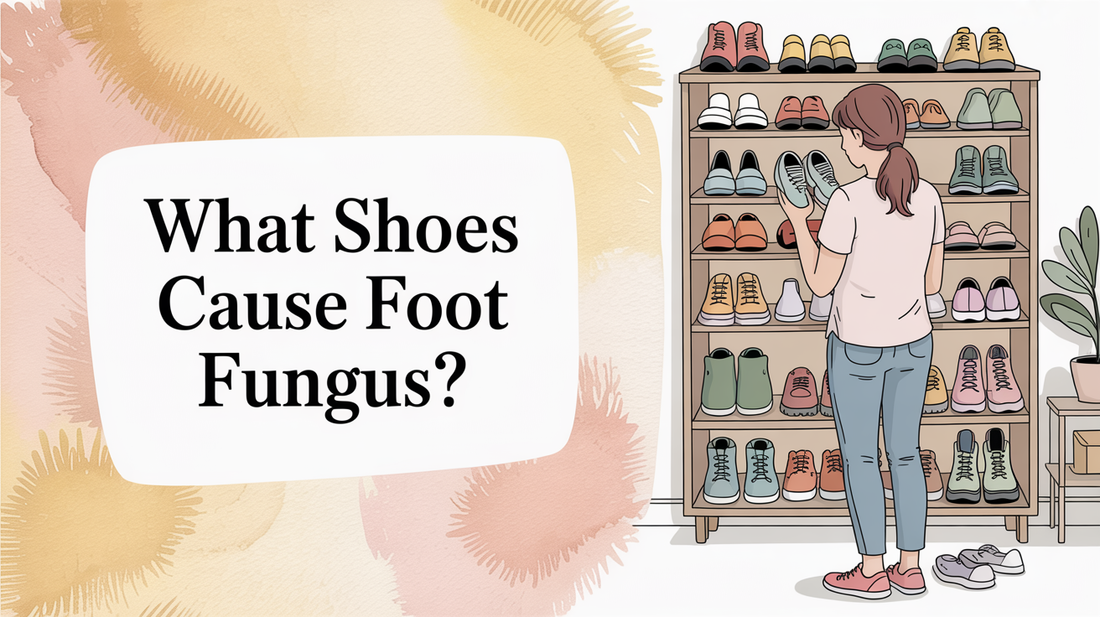What shoes cause foot fungus?
non‑breathable materials, athletic shoe moisture, sandal hygiene — It’s important to understand how certain shoes can contribute to foot health challenges. Non-breathable materials can trap sweat, while athletic shoe moisture and poor sandal hygiene can create ideal conditions for fungal growth. This blog is structured into three sections, providing actionable insights to help you maintain healthy feet starting tonight!
Materials That Trap Moisture 🧭
Choosing the right materials for footwear is crucial in preventing discomfort and issues like fungal growth. Certain materials, such as synthetic ones found in many shoes, tend to trap heat and moisture, creating an environment where fungi can thrive. For instance, non-breathable materials like vinyl, plastic, and rubber restrict air circulation, which is essential for keeping your feet dry and comfortable.
Additionally, tight-fitting shoes can compress your foot, hindering ventilation and causing moisture to accumulate. Non-porous leather can also become a problem when it lacks proper ventilation, leading to dampness and discomfort. By being mindful of the materials you select, you can help maintain a healthier foot environment.
- Opt for breathable materials to enhance airflow.
- Avoid non-porous leather without ventilation.
- Choose shoes with linings that allow moisture to escape.
- Limit dense foam padding that restricts airflow.
- Stay clear of waterproof materials that trap moisture.
Try It Tonight: Calm, Fresh Feet ✨
- Wash feet with warm water and mild cleanser; dry thoroughly between toes.
- Apply a small amount of Kissable Feet where needed; massage until absorbed.
- Let skin breathe; slip on breathable socks if desired. Patch-test first if you’re new to this foot cream.
Workout Footwear Dos & Don’ts ✨
When engaging in physical activities, the level of foot moisture can increase significantly due to sweating. This makes it crucial to choose the right athletic footwear. Athletic shoes often create a warm, enclosed space that, combined with moisture, can foster fungal growth. By following specific dos and don’ts, you can effectively reduce the risk of infections.
For example, opt for athletic shoes with mesh panels or breathable materials that allow for ventilation. It’s also wise to avoid wearing the same pair of shoes for consecutive workouts without giving them time to dry. As a best practice, remove your shoes immediately after exercising and let your feet air out.
- DO choose shoes with breathable materials for better airflow.
- DON'T wear the same shoes without allowing them to dry first.
- DO use moisture-wicking socks to keep feet dry.
- DON'T store sweaty shoes in closed bags.
- DO let your feet air dry post-workout.
Why We Recommend a Gentle Helper 🌿
Kissable Feet is designed for quick absorption and delivers a soothing feel. The unique blend of tea tree, coconut, and calendula can be a great addition to your routine for comfort and relief.
- Fast-absorbing comfort—non-greasy finish.
- Gentle sensation suited for sensitive, overworked feet.
- Clean-leaning, bedtime-friendly scent.
Rotating & Refreshing Your Shoe Rack 🔍
Maintaining a clean and dry shoe environment is essential in preventing fungal growth. Implementing proper shoe rotation and maintenance can significantly contribute to foot health. Allowing shoes to dry completely between wears and keeping them clean can minimize the presence of fungal spores.
For instance, rotating between 2-3 pairs of shoes provides the necessary drying time needed. Additionally, using cedar shoe trees or even newspaper can help absorb moisture while maintaining the shape of your shoes. Regularly applying antifungal powders in humid conditions can be beneficial as well.
- Rotate shoes to allow 24-48 hours drying time.
- Use cedar shoe trees or newspaper to absorb moisture.
- Apply antifungal treatments regularly during humid weather.
- Store shoes in ventilated areas, not closed spaces.
- Replace old shoes that show signs of wear or odor.

